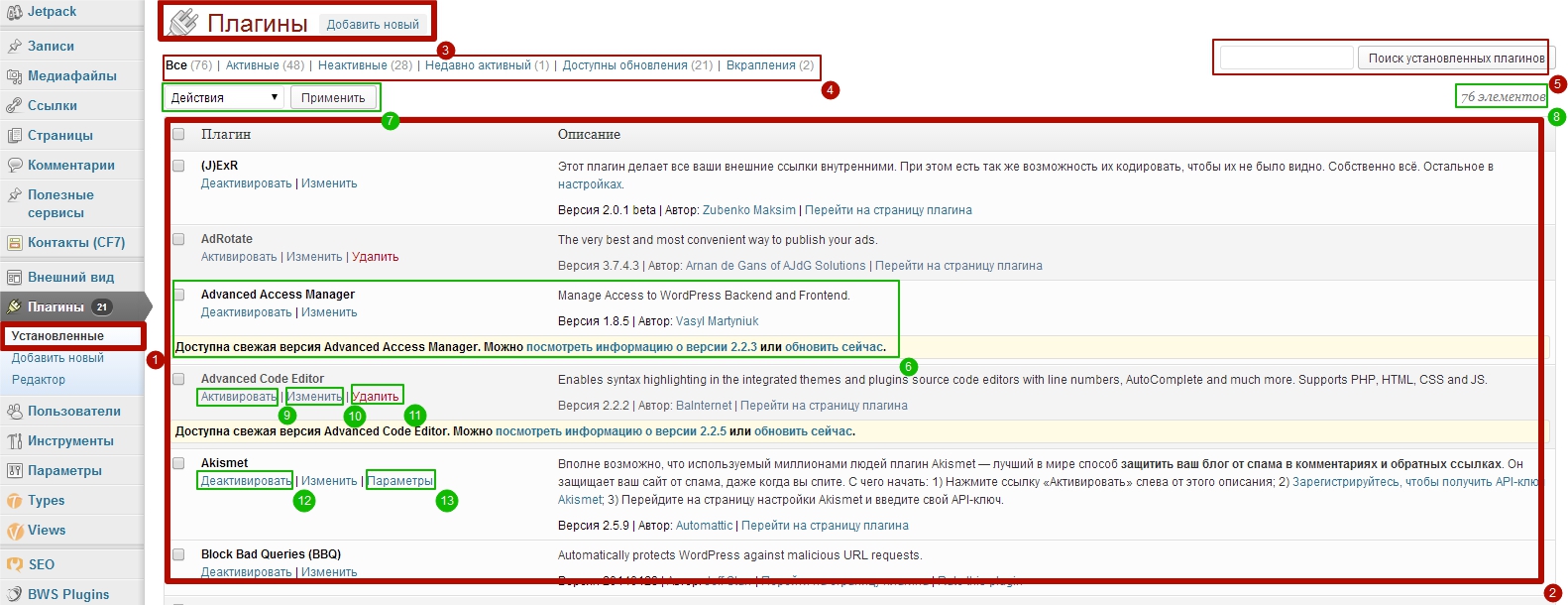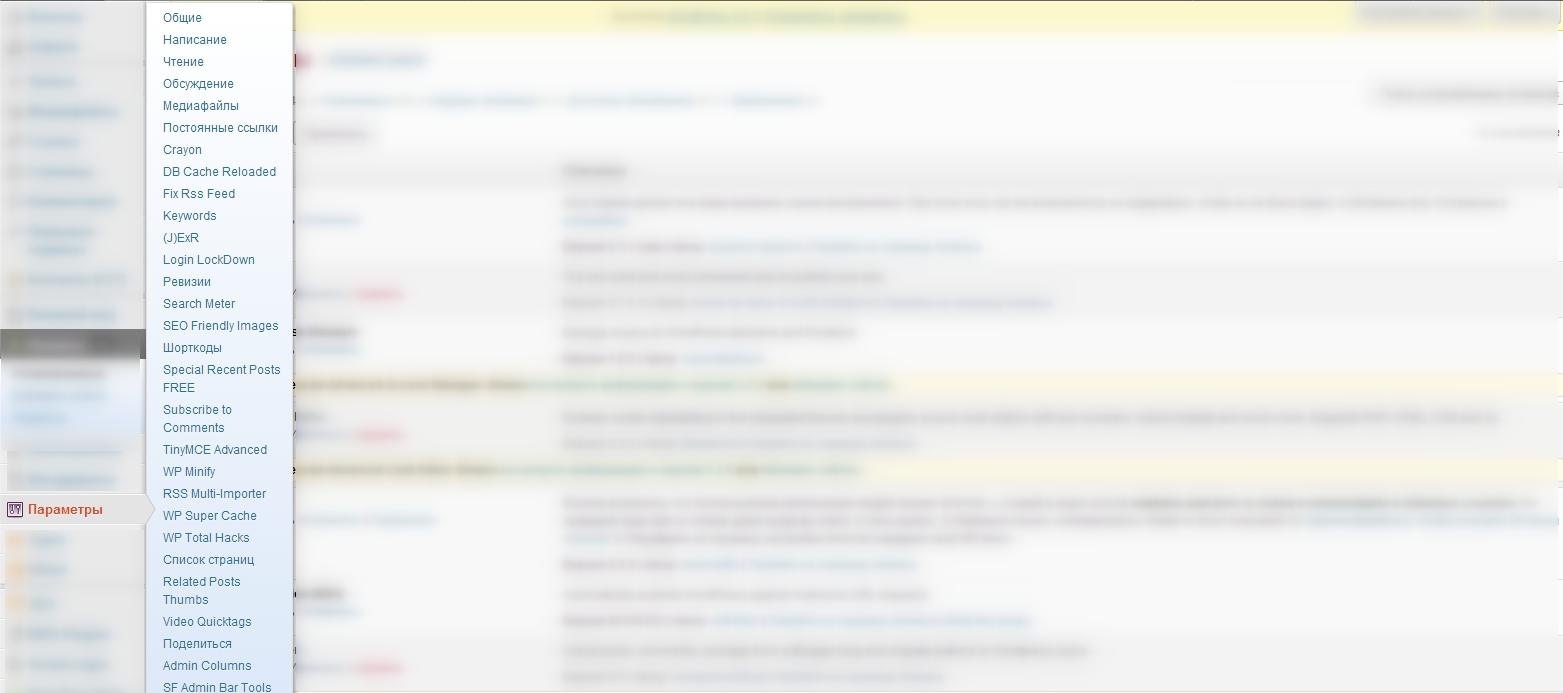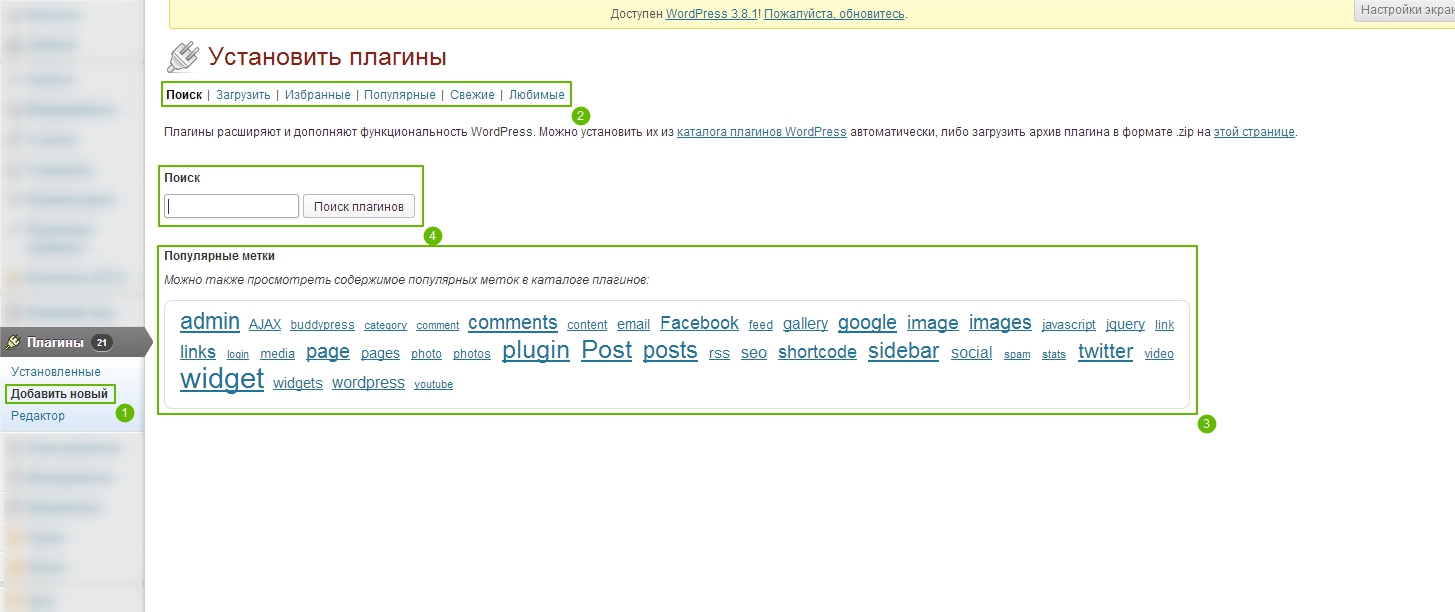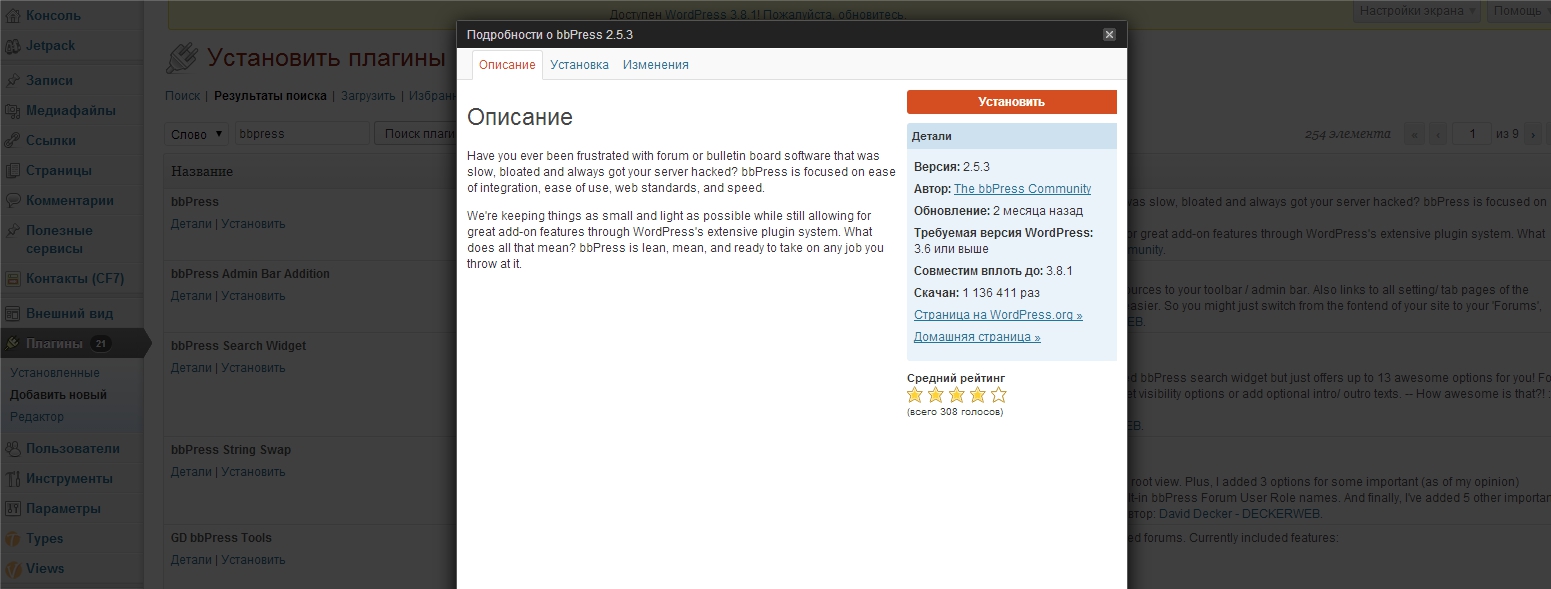Working with WordPress Plugins - Tutorial 8
Let's read and understand the theory of what plugins are and what they are for
I think that this item will be the most interesting for novice webmasters., since this is where you can roam with the expansion of the possibilities of CMS WordPress. In fact, first you need to understand the word plugin itself and why they are made and we will start from afar, but you need to read it without memorizing, but think about it.
The main requirement for any control system is its extensibility and the ability to develop, since any software product that is not expandable, becomes obsolete and quickly disappears from use, the dynamics of the software market is very large.
Wikipedia and other well-known sources about plugins say something like this.
plugin – independently compiled software module, dynamically connected to the main program, and / or uses its capabilities to expand functionality. So it's like this. A plugin is an additional program, which connects to the main program and extends it. There is another important concept of the control system API, these are its basic functions that are already configured in terms of protection, and quality of work, which means, it makes sense to use them when expanding the system, but more on that later.
Now I would like to clarify, that the plugin expands the capabilities of the control system, we will learn how to use it.
Getting Started with Plugins
We go to admin panel -> menu plugins -> established. View the plugin list box in order:
- In the Manage section there is a list of all plugins.
- List of all installed plugins.
- Button to add new plugins (more on that later).
- Filter to select a list of plugins in different states.
- Все – displays all installed plugins
- Active – CMS WordPress has active and inactive plugins, active can work to the fullest and embed their functionality, while increasing memory consumption, rather than active consumption of resources do not require and are simply stored on the server. One can say, that inactive plugins are simply turned off from the workflow.
- Recently Active – item speaks for itself, I think it's too much to explain.
- Available updates – WordPress has a dedicated server, where all checked plugins are stored, this server is called the plugin repository. If the developer performs a plugin update, protecting it or improving the functionality in the repository on wordpress.org, then the CMS itself will ask you to update it and in the paragraph Available updates you will see all the plugins that need to be updated. IMPORTANT TO REMEMBER, that you should always make a copy of the site and database before upgrading, no problems on the server, no rare errors in plugins have broken your CMS. It’s good if your hosting can regularly and efficiently make copies, throughout the month. I am hosting ukraine, as long as I'm happy with it.
- If you could not find the plugins you need using the filter, then you can use search.
- Below this item shows how WordPress can request plugin updates., moreover, you can also see the number of plugins that need to be updated on the left in the menu Plugins.
- Next to each plugin in the list there is a checkbox with which you can select multiple plugins., a paragraph Actions allows you to perform a specific action for several plugins at the same time. You can activate multiple plugins (turn on), deactivate (switch off), update to latest version or delete.
- Shows the number of installed plugins on the site.
- Activate – here you can activate inactive plugins (include them in the system).
- Change – you can change the code of any of the plugin files, if the plugin is made according to all the rules of the WordPress API.
- Delete – you can remove plugins, you don't need. I emphasize, that not everything can be removed, but only those plugins that were previously deactivated.
- Deactivate – you can disable plugins, which are no longer needed, so that they do not slow down the site.
- Options – this item is not available in all plugins. In some plugins, using the item Options or Settings you can quickly go to its settings. The settings of most plugins can also be accessed through the menu Options -> {plugin name}
I think, that everything said above should be clear to you, if something is unclear, ask and correct me in the comments, I will improve the article.
If everything was clear with the first practical part of working with the admin panel, then let's move on to the second part..
Adding a Plugin to WordPress
Let's start the consideration of adding plugins from the first picture:
Let's start with the menu Plugins -> Add new (point 1 on the image). In the window that appears, there is a menu at the top (point 2), let's take a look at it:
- Search – search for plugins in the official repository (storage) WordPress.
- Download – download plugin from computer, plugins are downloaded as a zip file.
- Favorites – As far as I understand these are the plugins, which engine developers consider the most interesting.
- Popular – popular plugins by rating.
- Fresh – since plugins are made by third-party developers, their number is constantly increasing.. The fresh item helps you see new plugins recently added by third-party developers.
- Favorite – these are plugins, which you liked on the official website of the system developers. If you are wondering how to create your own list of favorite plugins, then you can read the article after studying this material, which I named Automatic installation of plugins. The second part of the article just describes how to determine your favorite plugins..
Under 3 point you can see what queries users search for plugins most often, the larger the word or phrase, the more often it is searched for in the repository.
4 item is search – using it, you can find the necessary plugin and install it without going to the developer's website and without downloading the plugin there, mom system will do everything for you. See the picture below. Although many hostings block the plugin installation function and offer to enter data via ftp or ftps, in such cases, write to me in the comments to the lesson and I will help to solve this problem.
In the next tutorial we will try to install plugins. I will give you a list of those plugins that I find useful and without which you simply cannot do.
That's all about plugins for now, we learned how to install them and learned, how to configure them in the admin panel. More details about, how to make plugins I will tell in a separate course, which I am going to write after the base. Good luck to everyone in learning WordPress CMS.


- Basic web design course;
- Site layout;
- General course on CMS WordPress and continuation of the course on template development;
- Website development in PHP.














